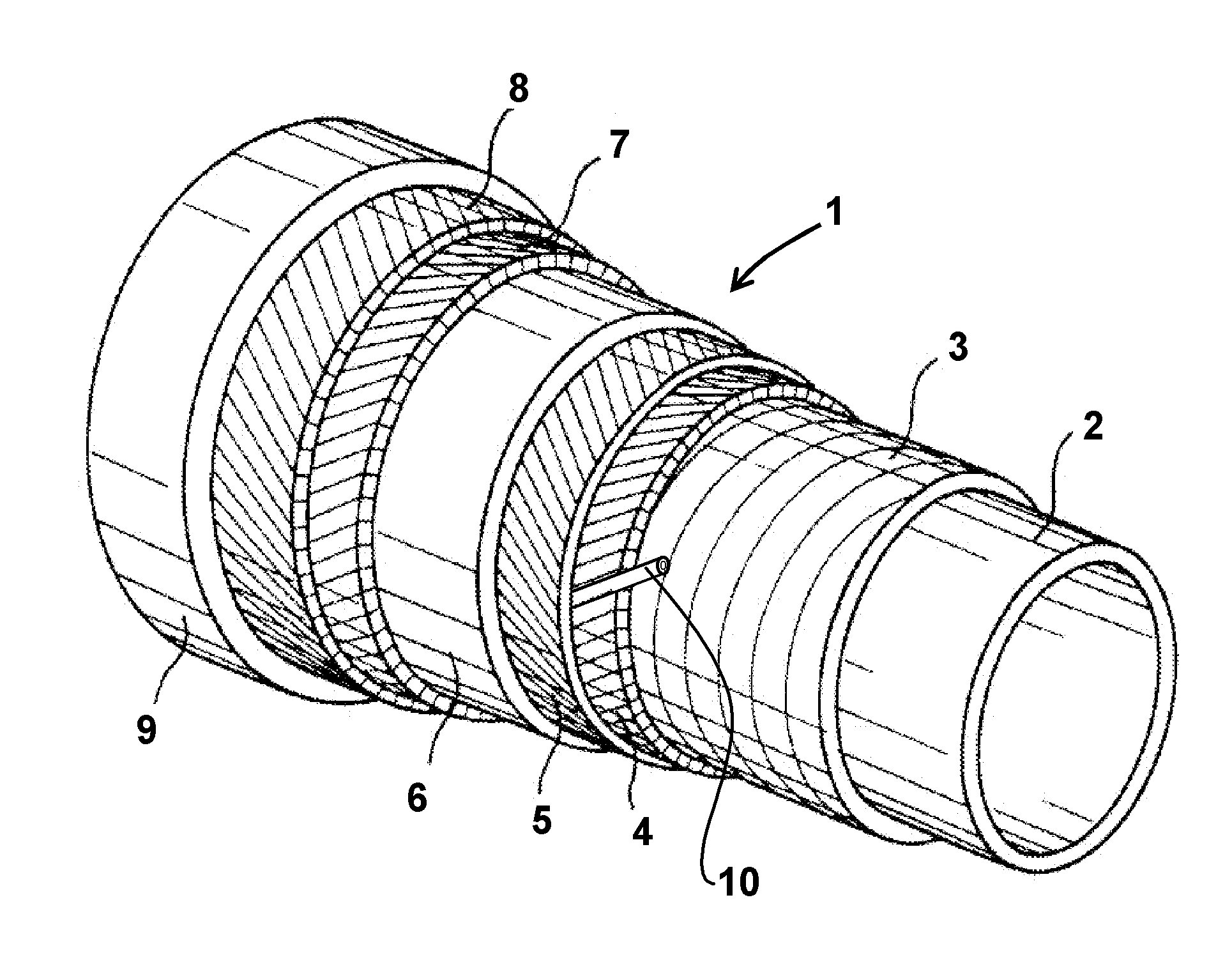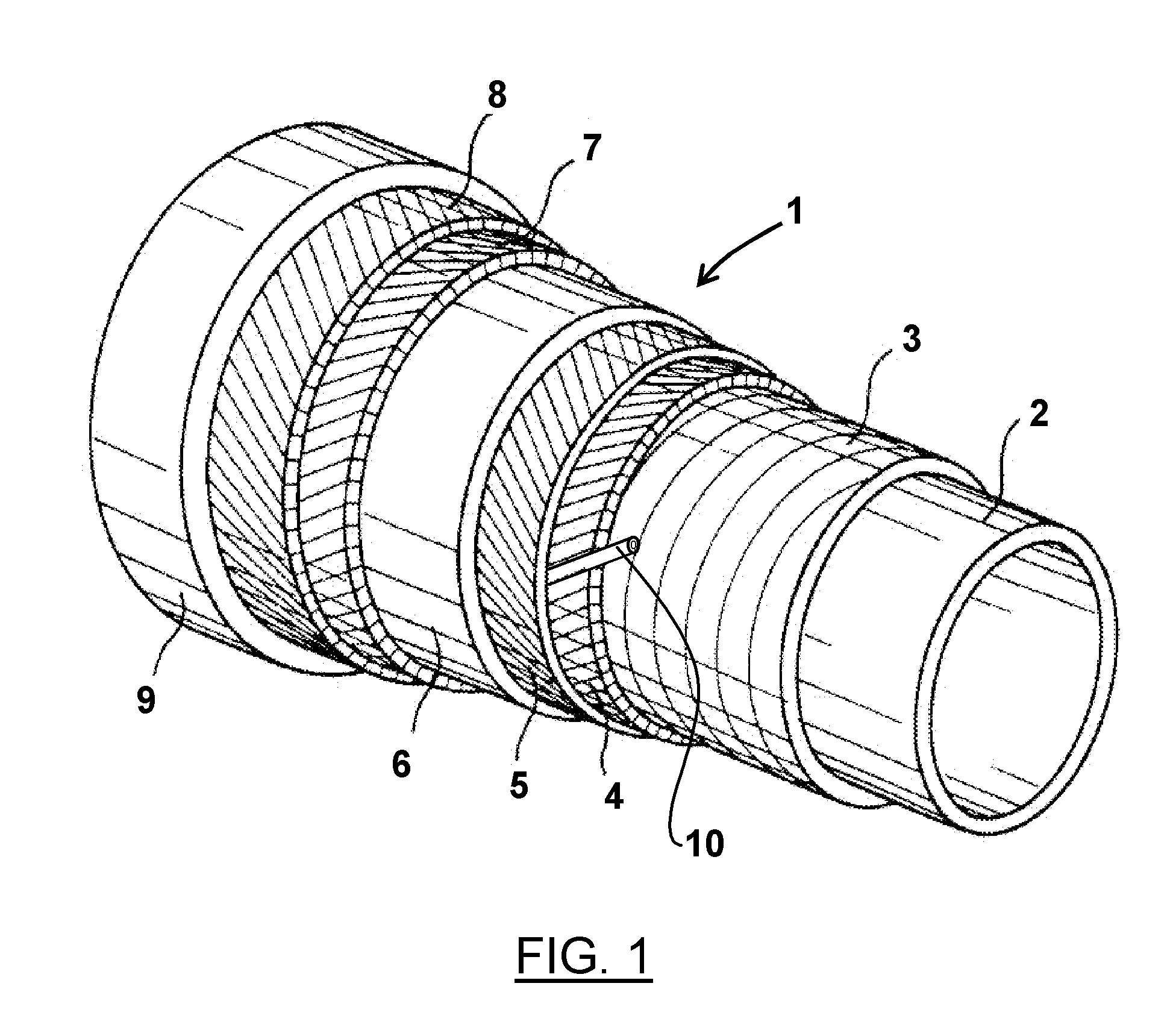Flexible tubular pipe for transporting gaseous hydrocarbons
a flexible tubular pipe technology, applied in the direction of pipe couplings, fluid tightness measurement, instruments, etc., can solve the problems of internal polymer sealing tube collapsing, rough pipe, and disturbance of the flow of gas in the pipe, so as to avoid oversizing reduce the thickness of the outer armor plies, and reduce the pressure resistance performance.
- Summary
- Abstract
- Description
- Claims
- Application Information
AI Technical Summary
Benefits of technology
Problems solved by technology
Method used
Image
Examples
Embodiment Construction
[0029]The flexible tubular pipe 1 of the invention is intended for offshore oil production and more particularly for transporting gaseous or two-phase hydrocarbons. It is of the unbonded type and meets the specifications defined in the normative document API 17J.
[0030]According to the embodiment of the invention illustrated in FIG. 1, the innermost element of the flexible tubular pipe 1 is an internal polymeric tube 2, which is generally manufactured by extrusion. It has the function of sealing the duct within which the fluid flows and of withstanding the radial pressure due to the internal pressure exerted by said fluid with the aid of the pressure vault 3. The internal wall of this tube is smooth, so that the pipe is referred to as a smooth-bore pipe.
[0031]The pressure vault 3 is formed by a short-pitch winding of an interlocking profiled metal wire. This profiled wire has for example a Z-shaped profile, commonly called a zeta profile, but other profiles may also be suitable, such...
PUM
 Login to View More
Login to View More Abstract
Description
Claims
Application Information
 Login to View More
Login to View More - R&D
- Intellectual Property
- Life Sciences
- Materials
- Tech Scout
- Unparalleled Data Quality
- Higher Quality Content
- 60% Fewer Hallucinations
Browse by: Latest US Patents, China's latest patents, Technical Efficacy Thesaurus, Application Domain, Technology Topic, Popular Technical Reports.
© 2025 PatSnap. All rights reserved.Legal|Privacy policy|Modern Slavery Act Transparency Statement|Sitemap|About US| Contact US: help@patsnap.com



